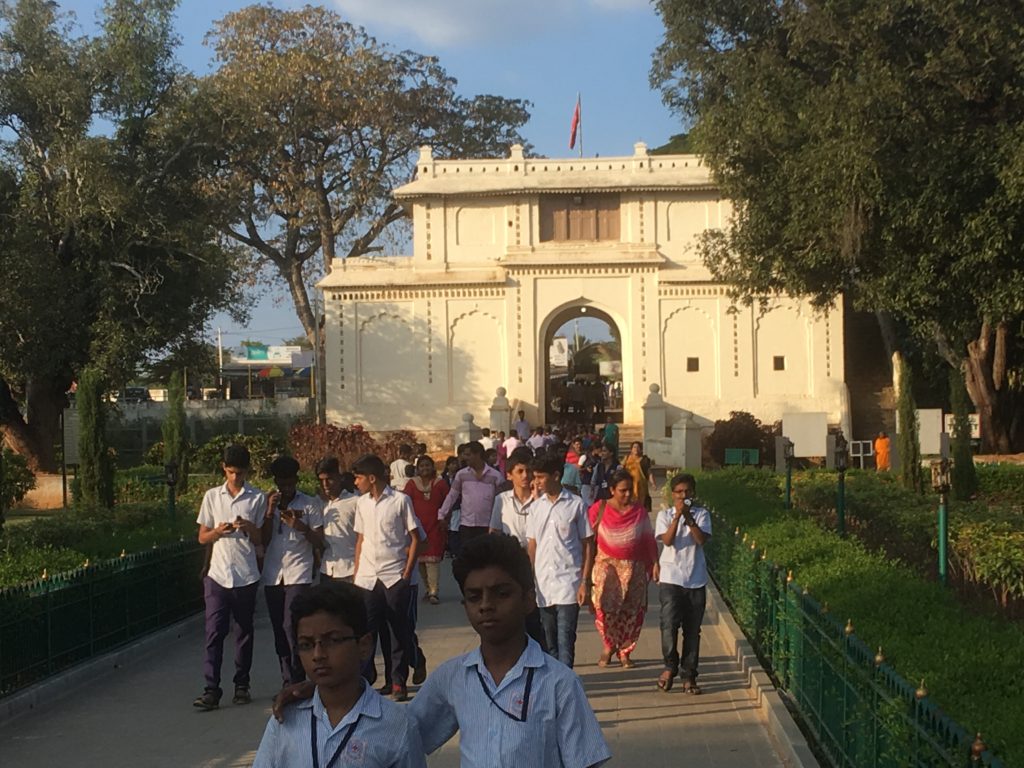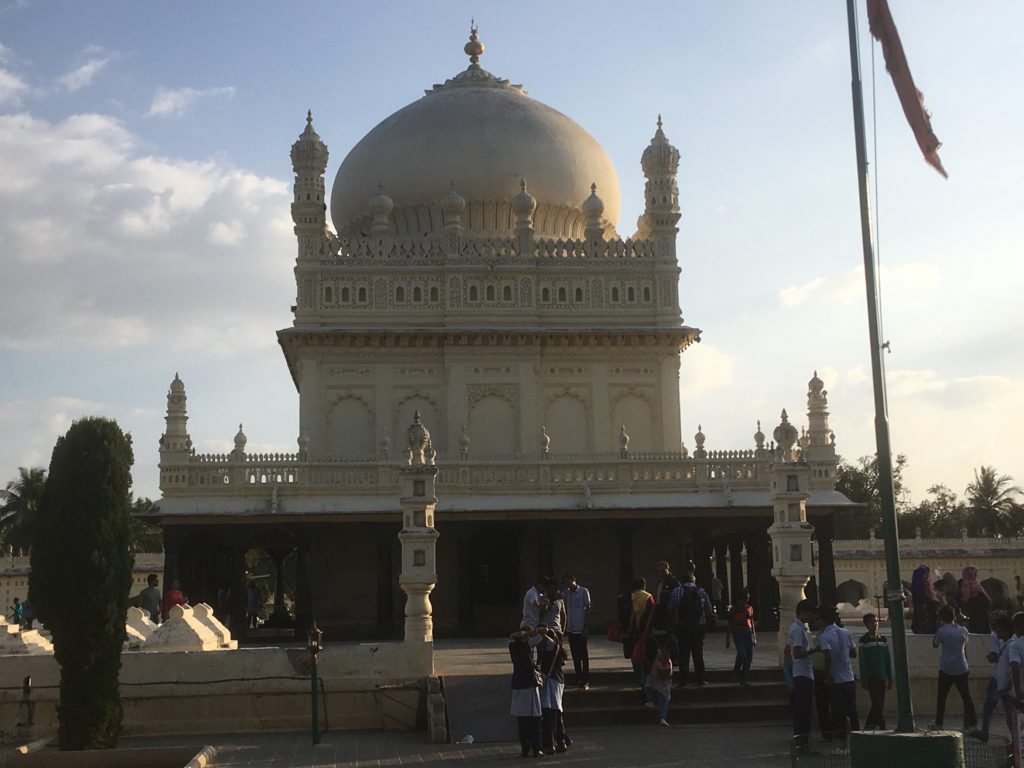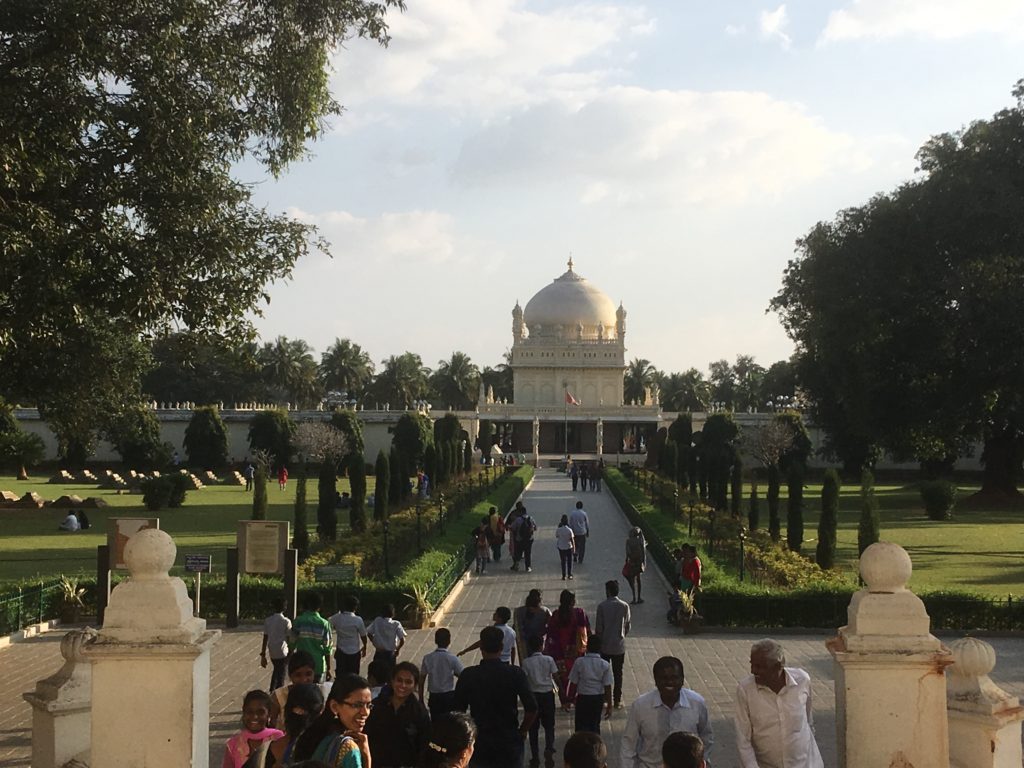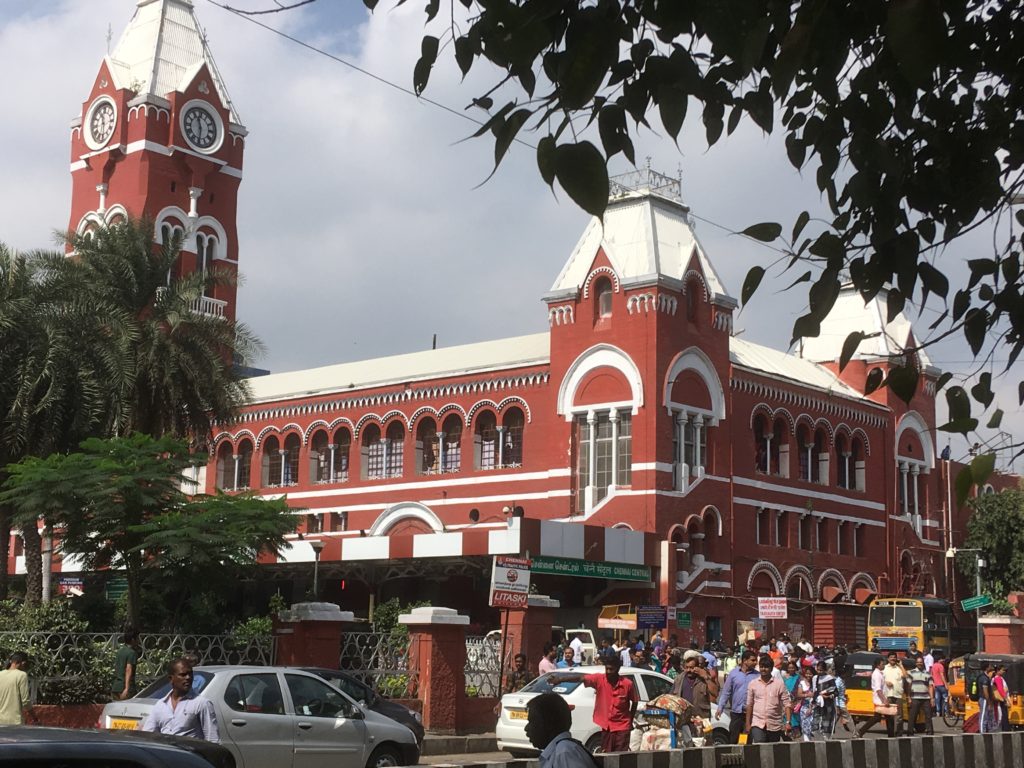
At 5.30am we arrived at the incredibly crowded station, where people lay sleeping on the ground, having meals, or selling almost every commodity possible, for the 8 hour train journey on the Bangalore “Shabtabi” Express. We settled into our extremely comfortable ‘Executive Class’ reclining seats, where wifi, a mains plug for charging, a copy of the Hindu Times and a bottle of water were provided. Just as we were thinking how civilised this was, trays arrived with fruit juice, tea or coffee and biscuits – a sort of wake up drink. The train pulled out at precisely 6.00 am and we spent a happy hour or so watching Chennai’s industrial landscape give way to the countryside and reading our papers, before a simple breakfast and more coffee. It seemed that in no time at all we had arrived in Bangalore, the IT centre of India, where we were joined by families on holiday and then served lunch. By early afternoon, we had arrived in Mysore remarkably refreshed.
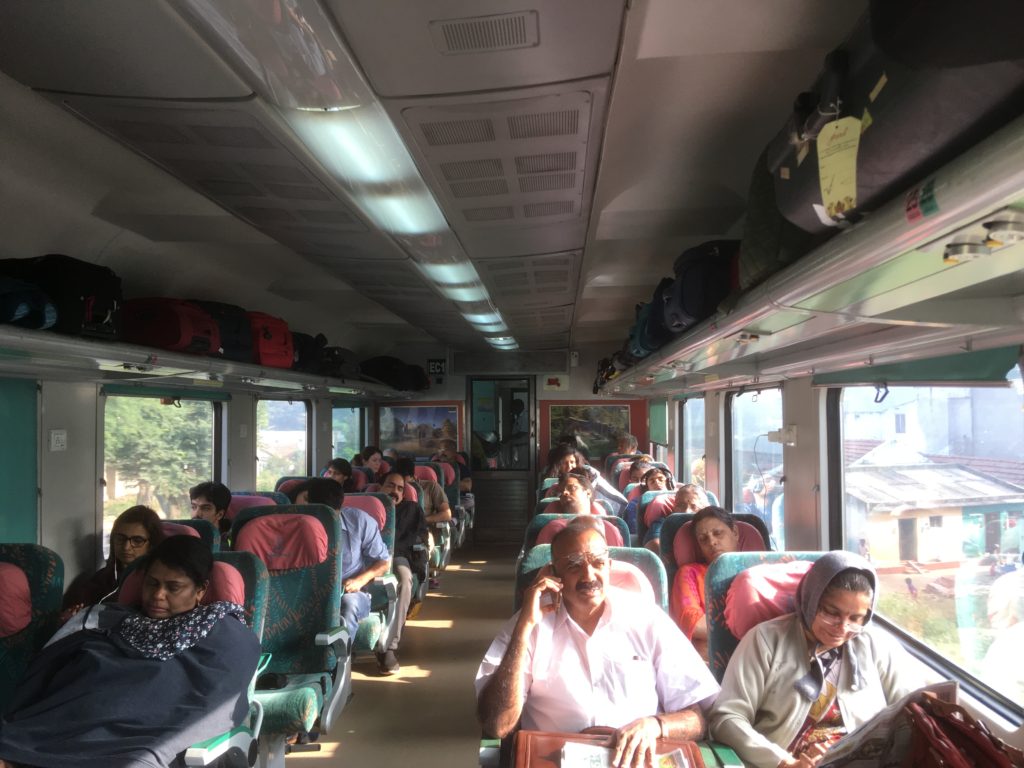
Mysore is delightful, with many old colonial buildings and palaces set along wide tree lined streets. Our hotel had originally been built for English visitors to the Maharaja and we stepped back about a hundred years into a world of gleaming brass, palms in pots and overhead fans, the only thing missing was a punkah wallah.
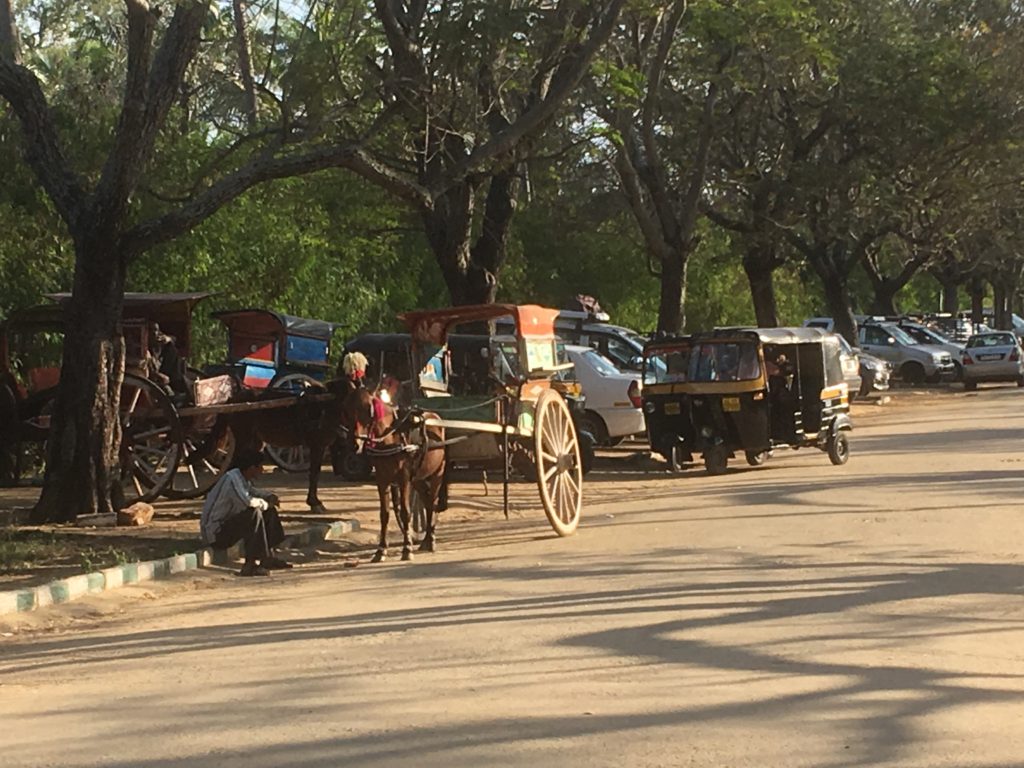
From the train we had seen the remains of the fortifications of Sriringapatnam destroyed by the British in 1799, and we now went to Tippu Sultan’s summer palace nearby, built some years before his final defeat. Decorated with floral designs and lively murals depicting courtly life and Tippu’s campaigns against the British, it stands like a Persian pavilion in a garden with cypresses and fountains that were not working at the time. The palace later became the residence of Arthur Wellesley, the future Duke of Wellington. Perhaps better known in England as Tippu Tiger, whose man eating mechanical tiger is in the V&A, this legendary ruler controlled much of southern India and until his defeat was a constant threat to the British presence there. He is regarded by some in India as the country’s first ‘freedom fighter’ against the British.
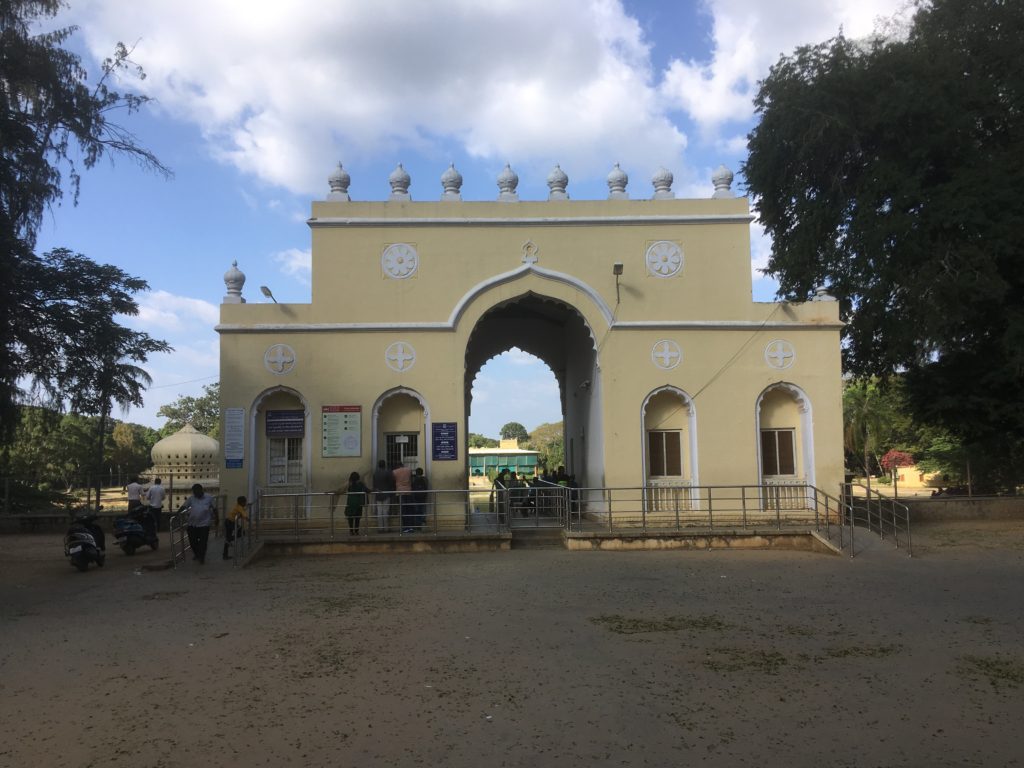
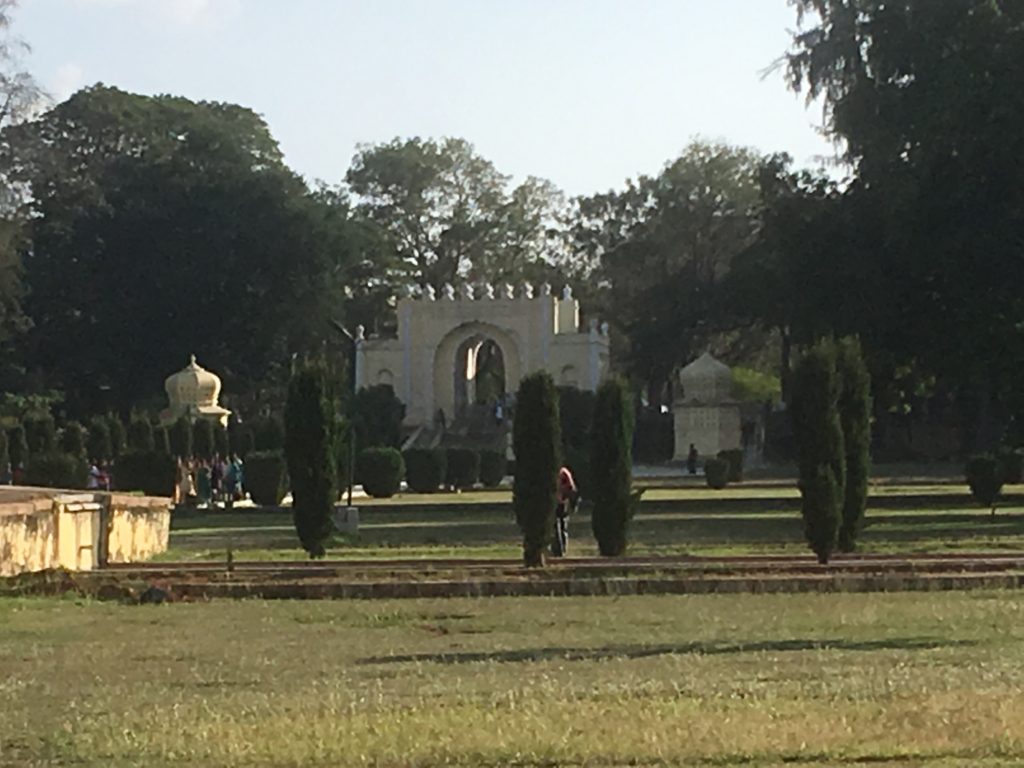
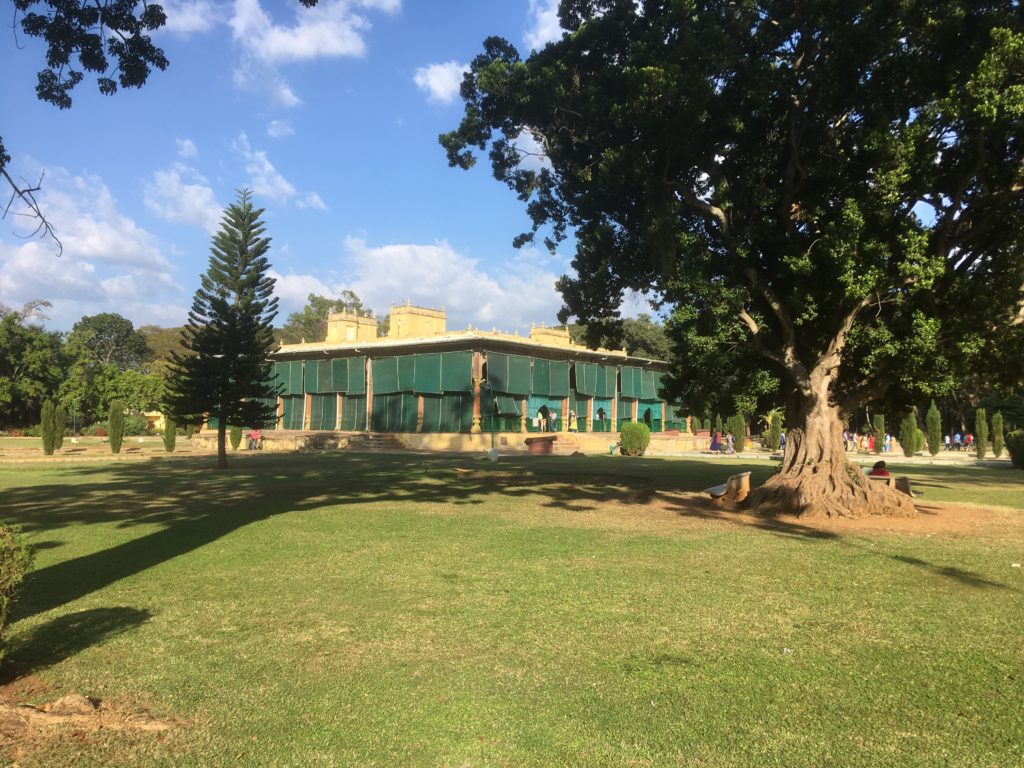

Nearby in a beautiful garden is the mausoleum of Haider Ali built by Tippu for his father, and both are buried there.
